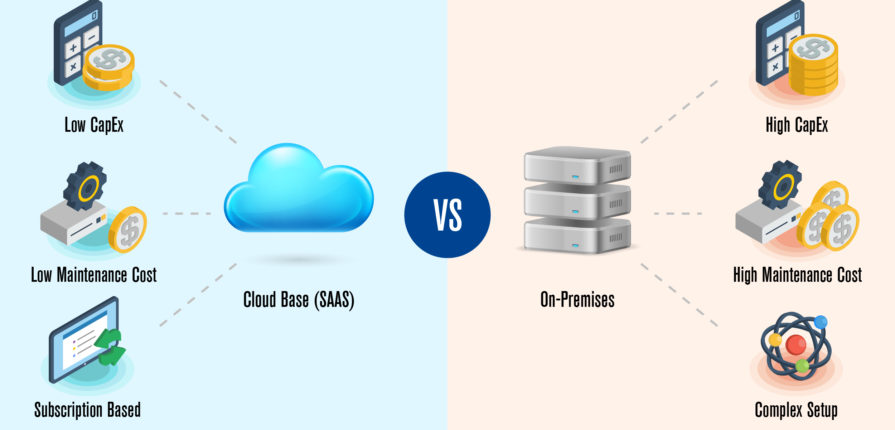Most people are aware of cloud-based services and have become increasingly reliant on them for a wide range of services. Since cloud-based services provide advantages in a broad range of applications, could they be just as advantageous in security applications, such as Video Management? Here are some top considerations.
What’s the Difference Between Cloud-based and Server-Based Video Management?
Before considering brands and vendors, the first consideration is how your video will be stored, accessed, and managed, whether locally or in the cloud.
Typically, a DVR is a wired system that connects analog cameras to the recording and storage system. DVRs have a maximum camera capacity of around 16. This setup works best for small businesses, homes, and locations requiring fewer analog cameras. Connecting or adding additional cameras beyond the system’s capacity requires a second recorder or moving to an NVR system. In an NVR system setup, the camera processes the video and streams it to the recorder over a network to be stored or viewed remotely.
Cloud-based Video Management is the remote storage of video recordings on the Internet. It does not require any physical equipment or a recorder—only an Internet connection. When a cloud-based surveillance camera records a video, the footage is converted to a file and sent to a storage host on the Internet.
Traditional DVR/NVR VMS (Video Management System)
- On-premises hardware and software store the recorded video on-site
- RAID storage required for redundancy
- Supports a wide array of varying analog & IP camera choices
- Local recording storage requires no Internet bandwidth, higher bandwidth only required for remote viewing
- Can be a longer, more complex setup
- Works for any sized business, scales by expenditure
- Higher capex investment, and requires additional local storage for each expansion
- Remote Access can be clunky and prone to connection issues/firewall rules issues
- Requires maintenance of the on-site hardware and software, updating firmware and configuration changes, hard drive replacements, etc.
- Can become obsolete quickly (5 years or less)
Cloud-Based VMS
- Infinitely scalable off-site storage with hybrid on-site storage if needed
- Backed up to three geographically separate data centers for redundancy
- Supports a wide array of analog & IP camera choices
- Requires a solid internet connection with high upload capacity for streaming to the cloud
- Buffering/Streaming can be scheduled to minimize operating hours usage
- Cameras are automatically configured as they are added
- Works for any sized business, scales by simply adding subscriptions (ideal for businesses with multiple sites/branches)
- Opex vs. capex, with no server, storage, hard drives, or software to maintain
- Cyber-secure, built for remote access, and traffic is “outbound only”
- Lower equipment costs due to economies of scale and shared infrastructure
- System updates and software changes are rolled out automatically, and cannot go obsolete
The foundation of success for any video surveillance system is knowledge and preparation. Your security partner and provider of choice must have a strong understanding of your organization, assets, and goals to ensure they’re protecting what matters most. It is also essential to utilize your partner’s experience to identify security trends and how to best mitigate your risk and expand opportunities.
About Sierra Group
As a united, multi-disciplined service-focused company specializing in electronic physical security, we have a unique 360° perspective that gives us the ability to help you meet your specific security needs with laser precision.
If you are looking for a security integration and management company or are interested in learning more, please contact us. Our goal is to help you reach yours.
Learn more about the Sierra Group difference here, or reach out to us at:
Chris Jeske
ESD Manager
818-266-7462 (cell)
1-(888)-880-4949 ext. 230
cjeske@callsierra.com
www.callsierra.com







